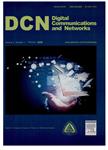版权所有:内蒙古大学图书馆 技术提供:维普资讯• 智图
内蒙古自治区呼和浩特市赛罕区大学西街235号 邮编: 010021

作者机构:Department of Computer Science and Engineering Thapar University Instituto de Telecomunica??es University of Beira Interior ITMO University
出 版 物:《Digital Communications and Networks》 (数字通信与网络(英文))
年 卷 期:2015年第1卷第3期
页 面:191-203页
学科分类:080904[工学-电磁场与微波技术] 0810[工学-信息与通信工程] 0809[工学-电子科学与技术(可授工学、理学学位)] 08[工学] 080402[工学-测试计量技术及仪器] 0804[工学-仪器科学与技术] 0838[工学-公安技术] 081001[工学-通信与信息系统]
基 金:partially supported by Instituto de Telecomunica??es,Next Generation Networks and Applications Group (Net GNA),Covilh? Delegation,by Government of Russian Federation,Grant 074-U01 by National Funding from the FCT–Funda??o para a Ciência e a Tecnologia through the UID/EEA/500008/2013 Project
主 题:Internet of vehicles Petri net Cloud repository VM-scheduling
摘 要:Internet of Vehicles(IoV) is a leading technology of the present era. It has gained huge attention with respect to its implementation in wide variety of domains ranging from traffic safety to infotainment applications. However, Io V can also be extended to healthcare domain, where the patients can be provided healthcare services on-the-fly. We extend this novel concept in this paper and refer it as“Healthcare services on-the-fly. The concept of game theory has been used among the vehicles to access the healthcare services while traveling. The vehicles act as players in the game and tend to form and split coalitions to access these services. Learning automata(LA) act as the players for interaction with the environment and take appropriate actions based on reward and penalty. Apart from this, Virtual Machine(VM) scheduling algorithm for efficient utilization of resources at cloud level has also been formulated. A stochastic reward net(SRN)-based model is used to represent the coalition formation and splitting with respect to availability of resources at cloud level. The performance of the proposed scheme is evaluated using various performance evaluation metrics. The results obtained prove the effectiveness of the proposed scheme in comparison to the best, first, and random fit schemes.